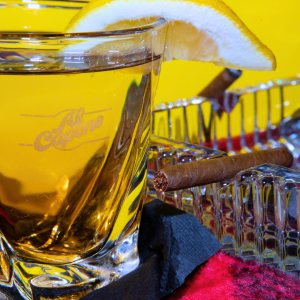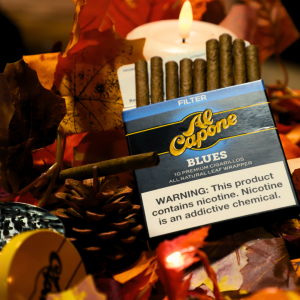Inviting friends over for a poker game is more than just dealing cards, it’s about cultivating an evening of camaraderie, friendly competition, and great food. Without proper planning, the night can stall when chips run short or players get hungry. This article lays out a polished yet approachable blueprint for hosting poker night right with ideas and party favors. You’ll explore the pros and cons of cash games versus tournaments, learn how to distribute chips and pace blind levels, discover snack and drink pairings, and assemble thoughtful party favors. And for adult guests, a subtle touch like including cigarillos in the mix can add a refined edge to the evening. Follow our timelines, checklists, and budget breakdowns to keep the night flowing smoothly from the first shuffle to the final showdown.
Poker Night Game Format and Structure
Cash Games Versus Tournaments
The first decision when planning poker night is choosing between a cash game or a tournament. In a cash game, players buy in with real currency (for example, $200 at a $1/$2 blind structure) and can rebuy if they run out of chips. This format offers flexibility, players can join or leave at any time, and starting stacks often represent 100 big blinds or more. Conversely, a tournament allocates each participant a fixed amount of chips that have no direct monetary value; once you’re out, you’re out. Tournaments often feel more competitive and create a clear winner, yet they require more structure and planning.
Determining Starting Stack Sizes
If you elect to hold a tournament, your starting stack size dramatically influences the length and feel of the game. Experts recommend providing a stack equal to 100–150 big blinds so players have enough chips to make strategic bets. For instance, in a typical tournament with $25 and $100 chips, each player might receive 10,000–15,000 in chip value spread across low, medium and high denominations. A balanced mix, around 40 % of chips in low denominations (e.g., $5 or $25), 40 % in medium denominations ($100) and 20 % in high denominations ($500 or $1,000), ensures smooth betting and prevents players from being forced into large bets too early.
Structuring Blind Levels
Blinds are the forced bets that keep a poker game moving, and in a tournament they must increase over time to encourage action. Upswing Poker’s guide outlines several blind structures depending on how long you want the game to last:
- Extended Play (approx. 6 hours): Hand out a starting stack of roughly 3,000 chips and bump blinds every 30 minutes.
- Standard Play (approx. 3 hours): Provide around 1,500 chips per player and raise blinds every 20 minutes.
- Turbo Play (approx. 2 hours): Offer a starting stack near 1,000 chips and increase blinds every 15 minutes for a faster game.
To illustrate, you might start at blinds of 25/50, then progress to 50/100, 75/150, 100/200, doubling or incrementally increasing each level as the game continues. Use a digital timer or poker tournament app to track levels, and display the blind schedule so everyone knows when they’ll rise.
Poker Table Setup & Poker Gear
Choosing a Surface
While professional poker tables have padded rails, cup holders and felt surfaces, you can still host a great game on a standard dining table. For comfort and authenticity, cover your table with a portable poker mat or a length of felt. Make sure the playing surface is large enough to accommodate players’ cards, chips and beverage coasters.
Cards and Chips
Invest in at least 500 chips for a table of up to eight players. If you anticipate more participants, you may need 750 or 1,000 chips. The chip breakdown should reflect the starting stacks described earlier: approximately 40 % low‑value chips, 40 % medium‑value chips and 20 % high‑value chips. Don’t forget extras like a dealer button, a little blind button and a big blind button to indicate positions.
Use two decks of cards to keep the pace quick; while one deck is in play, the other can be shuffled for the next hand. Choose high‑quality plastic playing cards that resist spills and won’t warp as easily as paper cards.
Seating and Lighting
Comfortable seating is essential for long poker sessions. Provide chairs with good back support, and add cushions if necessary. Ensure there’s ample lighting above the table or supplement with adjustable lamps to reduce eye strain. If you’re playing outdoors, string up lights or lanterns for both ambience and visibility.
Extra Tools
- Timer: A smartphone or tablet with a tournament clock app to signal blind increases.
- Scorebook: Simple sheets or a spreadsheet to track buy‑ins, rebuys and payouts.
- Chip Racks: Plastic racks help organize chips when counting or splitting stacks.
- Drink Coasters: Protect your playing surface from condensation and spills.

Poker Night Menu Planning: Food and Drinks
No poker night is complete without hearty snacks and beverages that guests can enjoy between hands. Aim for finger foods that are satisfying yet not messy.
Savory Selections
- Mini Sandwiches or Sliders: Fill small buns with pulled pork, mini burgers, or plant‑based patties for vegetarian guests.
- Chicken Wings: Offer a trio of flavors, such as buffalo, honey barbecue and garlic parmesan. Serve with dipping sauces.
- Stuffed Peppers or Mushrooms: Easy to eat, yet elegant enough to impress.
- Nacho or Taco Bar: Provide tortilla chips, soft shells, seasoned meat or beans, shredded cheese, salsa, guacamole, and other toppings so guests can assemble their own plates.
Snacks and Sides
- Pretzels, potato chips, and popcorn for quick bites.
- Fresh veggie platters with ranch or hummus for a lighter option.
- Cheese and charcuterie boards with crackers and pickled vegetables.
Desserts
Satisfy sweet tooths with brownies, cookies, or mini cupcakes. For a playful touch, bake sugar cookies shaped like playing cards or poker chips.
Beverages
Offer a well‑rounded drink selection: sparkling water, soda, light beers, and perhaps a batch cocktail like sangria or a whiskey punch. Provide plenty of ice, cups, napkins and bottle openers. Arrange drinks on a separate table so players don’t reach across the poker table and risk spills.
Party Favor & Welcome Kit Ideas for Poker Night
Turn poker night into more than just a game; make it an experience your guests remember. A simple welcome kit at each seat sets the tone: customized playing cards featuring your group’s name or logo, a notepad for tracking hands or jotting notes, and a small treat like chocolate coins or individually wrapped candies. Add a snack pack for the ride home, and you’ve covered the essentials with style.
Some Smokes
For adult guests, you can elevate the night with a subtle touch of sophistication: a curated cigarillo station. Al Capone cigarillos are a natural fit, classic, premium, and unapologetically REAL. Not Perfect. They’re easy to source through the Store Locator or trusted Online Retailers. Just remember, these are strictly 21+ and meant to be enjoyed responsibly, in designated spaces away from non-smokers.
Because the best favors aren’t about perfection, they’re about creating moments that last long after the final hand.
Detailed Planning Timeline
Organizing a poker night isn’t difficult when you break tasks into manageable steps.
- Three weeks before: Select a date, decide on cash game versus tournament and compile a guest list. Determine your buy‑in or entry fee and prize structure. If necessary, purchase or rent a poker table and additional chairs.
- Two weeks before: Order chips, cards and party favors. Plan your menu and ask guests about dietary restrictions. Send invitations with the date, time, entry fee and any special rules.
- One week before: Shop for non‑perishable food and beverages, and pick up additional plates, napkins and utensils. Finalize the blind schedule and print out copies for players. Create a spreadsheet to track buy‑ins and potential payouts.
- Two days before: Clean your home or playing area. Set up your table and chairs to ensure there’s enough space. Prepare make‑ahead dishes like marinated wings or cookie dough. Test your timer app and ensure your Wi‑Fi or playlist setup is ready.
- Day of event: Arrange chips at each seat, label tables or seats if necessary and set up the drinks station. Put cold beverages on ice and lay out the buffet. Briefly explain the rules of the game and start dealing.
Poker Night Budget & Gear Breakdown
Below is an approximate cost guide for hosting an 8‑player poker night. Costs may vary based on brand and quality.
| Item | Estimated Cost (USD) | Notes |
| 500‑chip poker set | $40–$80 | Includes carrying case and denominations. |
| Portable poker tabletop | $40–$100 | Foldable surfaces with felt lining. |
| High‑quality playing cards (2 decks) | $10–$20 | Plastic cards resist wear. |
| Seat rentals or extra chairs | $0–$50 | Borrow if possible. |
| Food & beverages | $10–$25 per person | Depends on menu complexity. |
| Party favors & kits | $5–$15 per guest | Custom cards, snacks, optional cigarillo. |
| Timer & accessories | $0–$10 | Smartphone apps are often free. |
Mistakes to Avoid
- Insufficient low‑value chips: Without enough small denominations, players are forced into larger bets too early.
- Poor blind pacing: Increasing blinds too slowly prolongs the game; too quickly can make it feel frantic.
- Miscounted chips during setup: Double‑check starting stacks to ensure fairness.
- Neglecting player comfort: Uncomfortable seating, poor lighting and cramped spaces shorten your guests’ stamina.
- Food on the playing table: It invites spills and greasy cards; set up a separate snack area.
- Vague rules or unclear house policies: Set ground rules for rebuys, buy‑in amounts and allowable betting variants before the game begins.
Pro Tips for Hosting
- Use a Standard Chip Distribution: For eight players in a tournament with 10,000 chips each, give each person 20 × $25 chips, 16 × $100 chips and 8 × $500 chips.
- Appoint a Dealer: Rotating the dealer slows the game. Assign one person as dealer for the entire night or rotate only a few times to maintain pace.
- Have a Cash Float: Keep small bills on hand to make change for buy‑ins or tipping a friend who deals all night.
- Create a Bust‑Out Table: For players who leave the tournament early, set up a side game like blackjack or a darts station so they stay engaged.
- Encourage Responsible Drinking: Provide plenty of non‑alcoholic drinks and designate drivers. Offer ride‑sharing codes if necessary.
Frequently Asked Questions
Q: How many chips do I need per player?
A: For a tournament, plan on at least 50–60 chips per player, with a mix across denominations to provide flexibility.
Q: Should I set a time limit?
A: A time limit keeps the evening on schedule. Choose a blind structure that aligns with your desired duration, longer intervals for a leisurely game and shorter intervals for a fast‑paced tournament.
Q: Can players rebuy?
A: Yes, rebuys can keep eliminated players in the game but may prolong the tournament. Set a cutoff point (e.g., after the first hour) when rebuys are no longer allowed.
Q: How do payouts work?
A: For small home games, pay out 60 % of the prize pool to first place, 30 % to second and 10 % to third. Adjust based on your group’s preferences and number of players.
Q: What’s the easiest food to serve?
A: Make‑ahead dishes like chili, meatballs or pulled pork can be prepared in a slow cooker, freeing you to enjoy the game.
Q: How should I handle late arrivals?
A: Assign them a chip stack and seat. They will have to post blinds they missed but can jump right in. Make sure this policy is clear to all players.
Q: Do I need special cards?
A: Regular playing cards work fine, but plastic cards last longer and handle accidental spills better. Keep an extra deck on hand.
Q: Should I print house rules?
A: Yes. Keep a sheet outlining blind structure, payout schedule, rebuys and any special rules so players can reference it throughout the night.
Conclusion
A well‑hosted poker night balances thoughtful planning with relaxed fun. By choosing your game format, distributing chips properly, pacing blind levels and providing comfortable seating and tasty snacks, you’ll create an inviting atmosphere for friends and family. Adding personal touches like custom playing cards or small party favors makes the evening memorable. Remember to communicate rules clearly and encourage responsible behavior. With this guide, you’re ready to shuffle up and deal a night of cards that will have guests eager for your next invitation.


